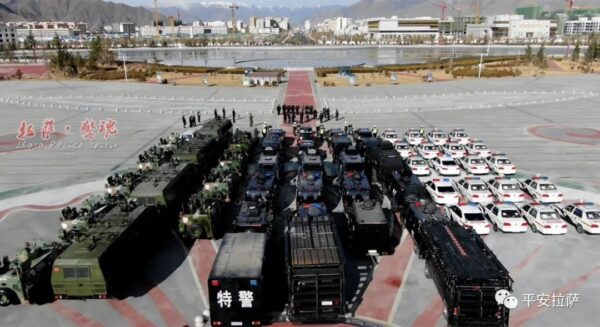Tibetet Segítő Társaság Sambhala Tibet Központ
Tibet Support Association Sambhala Tibet Center
székhely / telephely H-Budapest I. Attila út 123..
(00-36) 70 431 9343 (00-36)70 944 0260 (06-1)782 7721
sambhala@tibet.hu www.tibet.hu tibetpress.info
Facebook/Sambhala Tibet Központ Facebook/Tibett Segítő Társaság
MagnetBank/ 16200010-00110240
IBAN/HU94 16200010 00110240 00000000 SWIFT/HBWEHUHB
(1%) adószám/ 18061347-1-41
nyitva tartás/hétköznap 12.00-20.00 hétvégén előadás függő
» Retro» Tibeti művészet» Interjú» Levelek» Tibet Press» Tibet Press English» Dharma Press» Human Rights» Világ» Kína» Magyar» Ujgur» Belső-Mongólia » KőrösiCsoma» Élettér» Határozatok» Nyilatkozatok» tibeti művészet» lapszemle.hu» thetibetpost.com» eastinfo.hu» rangzen.net» ChoegyalTenzin» tibet.net» phayul.com» DalaiLama.com» vilaghelyzete.blogspot.com» Videók» Linkek» TibetiHírek» Szerkesztőség
Hatalmas katonai erődemonstráció volt a tibeti felkelés évfordulója környékén
2020. március 12./ICT/TibetPress
Jelenleg csak angolul olvasható. Magyarul később.
eredeti cikk
As Tibetans looked ahead to the 61st anniversary of the Tibetan Uprising, the Chinese government made its continuing domination of their Himalayan homeland clear with a massive show of military force.
On March 6, a joint military drill in central Lhasa, the capital of Tibet, brought out “combat-ready” troops of the People’s Liberation Army, firefighters and officers from the People’s Armed Policy.
The drill, which has almost become a ritual at this politically sensitive time of year, was held in the city despite almost empty streets due to China’s ongoing political lockdown in Tibet, which has become even worse this year because of the coronavirus (COVID19) emergency.
March anniversaries
On March 10, 1959, Tibetans broke out in mass protests against the Chinese troops who had invaded their country and were apparently planning to harm their spiritual leader, the Dalai Lama.
Within a few days, the Dalai Lama was forced to flee into exile, and Chinese rule in Tibet, a historically independent country, officially began.
In 2008, with the Olympics coming to Beijing, Tibetans again broke out in mass protests in the month of March, eventually leading to a major crackdown that has only gotten worse in the 12 years since.
For this year’s military drill, Chinese state media in the Tibet Autonomous Region, which includes Lhasa and much of western and central Tibet, emphasized the “sensitive period of stability.”
In Nagchu (Chinese: Naqu), a town in the TAR, Wang Weidong, member of the Standing Committee of the Autonomous Region Party Committee, told a meeting: “Our district has entered a sensitive period of stability in March.”
“Stability maintenance”
Images and footage of the military drill that circulated in state media show the mechanisms of China’s “stability maintenance”—politically coded language for the crushing of dissent and enforcement of control—in Tibet. These images provide a vivid demonstration of China’s disproportionate use of force among a population where there is no violent insurgency and where Tibetan resistance has been overwhelmingly nonviolent.
According to one state media report: “Departments and other agencies have a strong joint force to maintain social stability, and they have the right spirit to crack down on violent terrorist crimes.”
Some troops were pictured outside the InterContinental hotel in Lhasa. Next door to the InterContinental is the most notorious detention center in Lhasa, Gutsa, which has a reputation for the torture of Tibetan monks, nuns and laypeople.
The importance of the aggressive “stability maintenance” imperative was emphasized throughout the Tibet Autonomous Region, including in Shigatse (Chinese: Rikaze) and Nyingtri (Chinese: Linzhi), a heavily militarized area bordering the state of Arunachal Pradesh in India.
A day before the March 10 anniversary, the National Security Command in Lhasa pointedly convened a video meeting to arrange for the “deployment of the next phase of security and security work in the region.”
